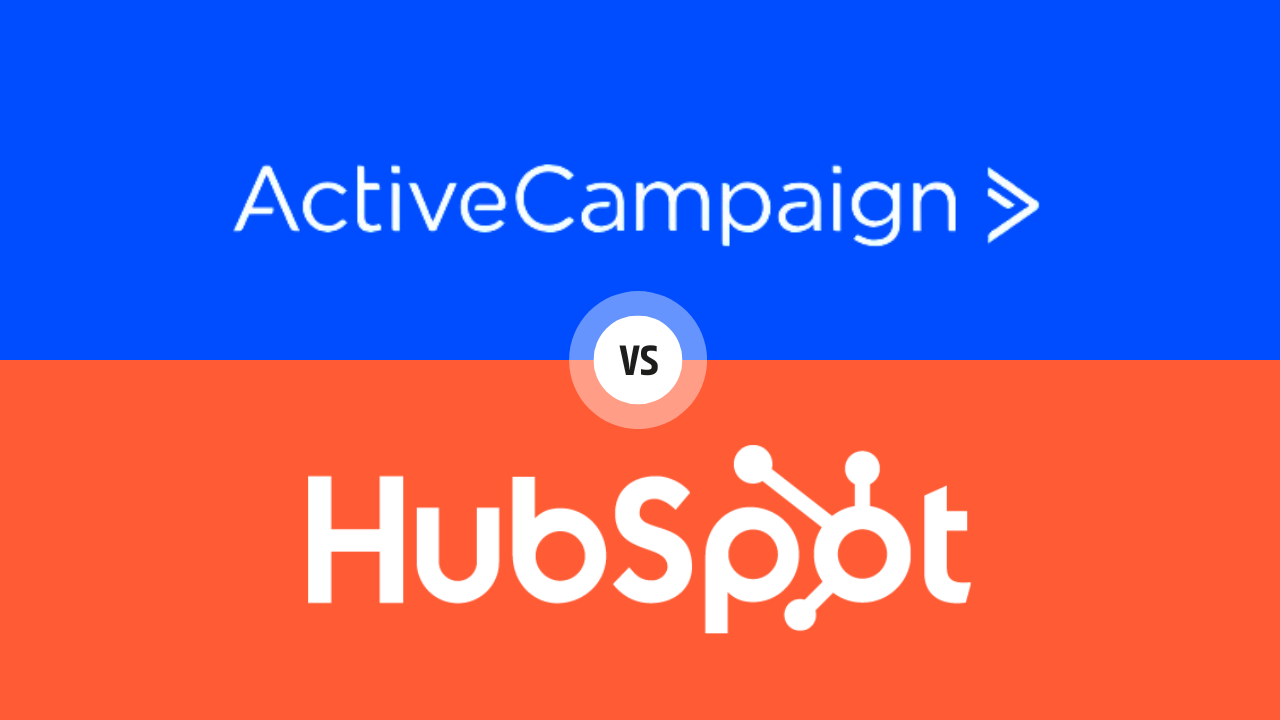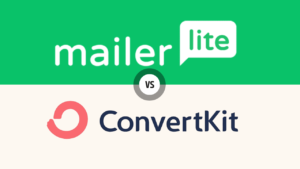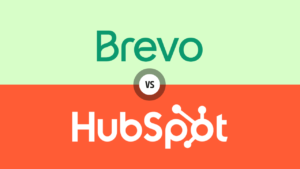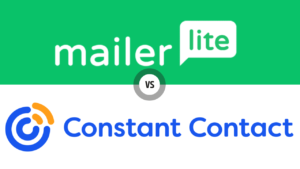Overview of ActiveCampaign vs HubSpot
Choosing one platform or the other is an important decision for a business looking to upscale marketing efforts, streamline operations, and increase sales in the email marketing space. Two of the biggest and most powerful platforms are ActiveCampaign and HubSpot, both bringing many features designed to help your business meet its marketing and sales goals. This article will is an introduction to both platforms, outlining their features and laying the foundation for an in-depth comparison of both from several different approaches.
Table of Contents
Ease of Use
ActiveCampaign comes with a fully customizable interface that will be able to serve most businesses’ specific needs. It has a drag-and-drop email builder, visual automation builder, and CRM that easily combines into its other functionalities. It is powerful in the level of customization, however, the features can sometimes become overkill for new or small teams without dedicated marketing tech support due to the steep learning curve and the large number of features.
On the other hand, HubSpot is easier to use for those users who prioritize clean and intuitive user experiences. HubSpot is intentionally designed to be incredibly easy from the very beginning, with an uncluttered dashboard and simpler navigation that enables your teams to adopt and use it without a big learning curve. In addition, there are comprehensive onboarding materials and a supportive community, making it a very attractive option for firms looking at onboarding themselves and getting started lightning-fast.


However, these differences aside, comparing ActiveCampaign vs HubSpot, we see that both still offer plentiful resources to help users extract the most out of their features. ActiveCampaign and HubSpot provide one of the largest knowledge bases, feature video tutorials, and host community forums. And, of course, they are not depleted when it comes to customer support or training sessions that make their users feel at home with the platform.
Marketing Automation Features
ActiveCampaign is renowned for its advanced automation capabilities, particularly in email marketing. It allows users to create complex, multi-step automation with conditions, actions, and triggers based on user behavior, preferences, and data. This level of detail enables businesses to craft highly personalized customer journeys, enhancing engagement and conversion rates. ActiveCampaign’s visual automation builder is a standout feature, offering clarity and control over the automation process.
HubSpot’s marketing automation features are also robust but are designed to integrate seamlessly across the platform’s broader suite of tools, including CRM, sales, and customer service hubs. This integration facilitates a persistent marketing strategy that not only attracts but also nurtures leads throughout the entire customer lifecycle. HubSpot’s workflows are user-friendly, making it easier for businesses to set up and execute automation strategies without needing deep technical expertise.
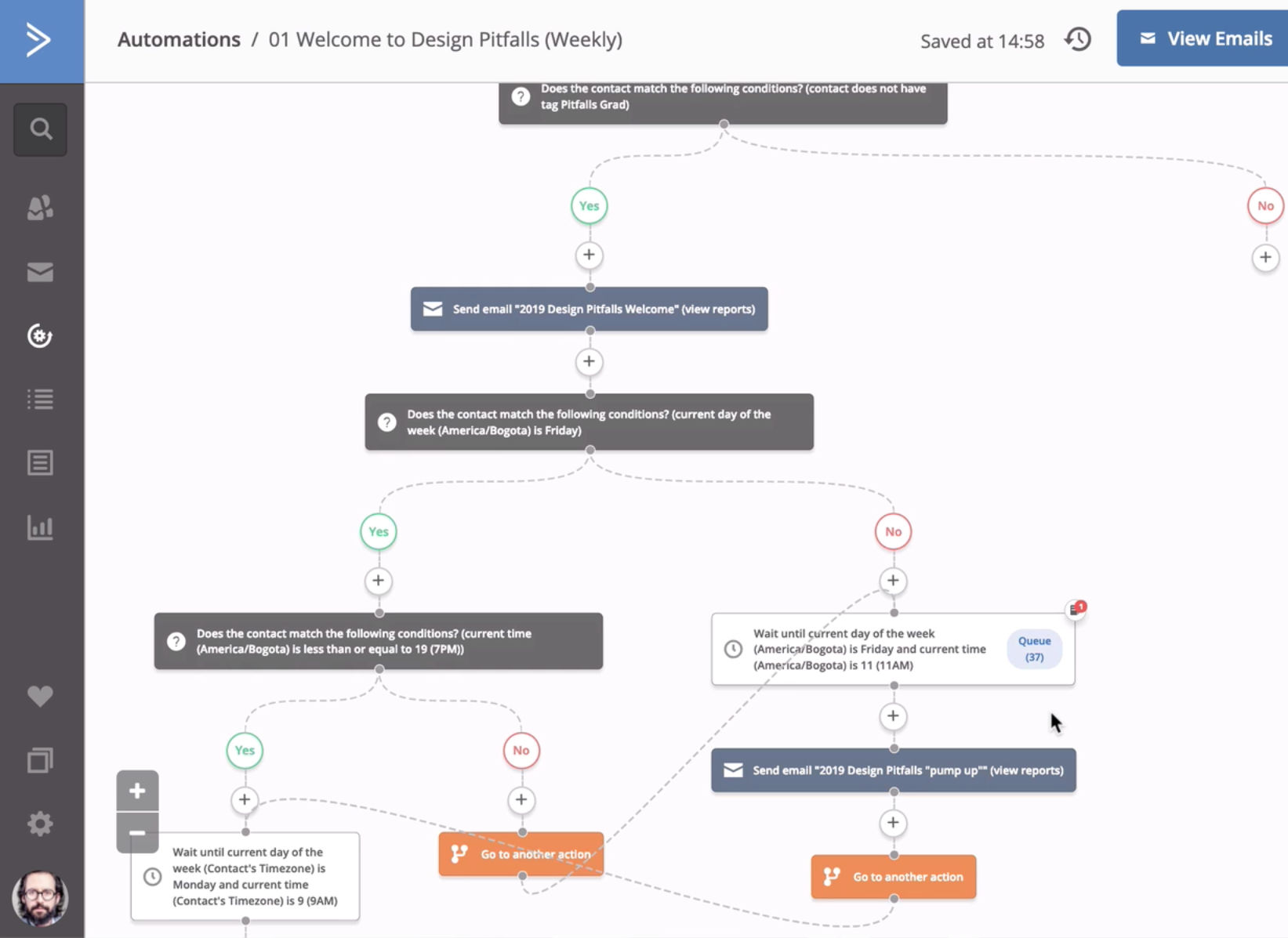

Comparing ActiveCampaign vs HubSpot in their marketing automation, they both offer automation templates to help users get started quickly, along with testing and analytics tools to measure performance and optimize campaigns. However, ActiveCampaign might be more suited for businesses looking for depth in email marketing automation, while HubSpot is ideal for those seeking an all-in-one solution that brings together various aspects of marketing, sales, and customer service.
Email Marketing Capabilities
ActiveCampaign excels in email marketing, boasting sophisticated segmentation, personalization, and automation capabilities. It allows highly customized campaigns based on user behavior, preferences, and past interactions. This level of personalization ensures messages are relevant and timely, increasing engagement and conversion chances. ActiveCampaign also offers advanced A/B testing functionalities, allowing marketers to refine their campaigns for optimal performance.
On the other hand, HubSpot integrates email marketing with its robust CRM platform, providing marketers with powerful customer data for segmentation and personalization. This seamless integration ensures a continuous flow of information across marketing, sales, and service teams, offering a comprehensive view of each customer’s interactions. Also, HubSpot’s email tool is user-friendly, with drag-and-drop editors and a variety of templates that make it possible to create beautiful and effective emails without needing deep technical knowledge.
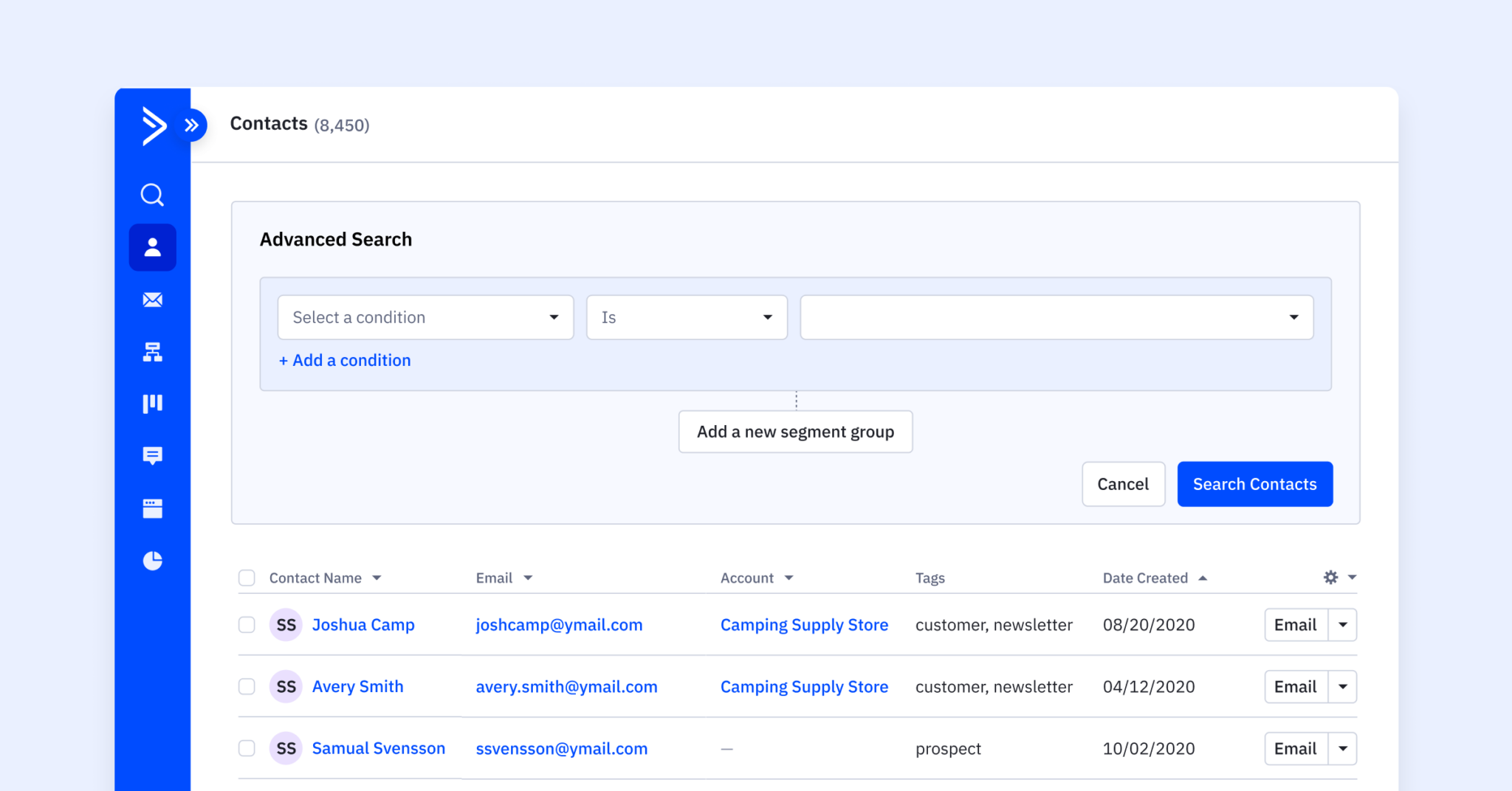

When comparing ActiveCampaign vs HubSpot in the context of email marketing, it’s clear both platforms offer robust tools for executing advanced email strategies. However, the decision between them may depend on the broader context of your marketing needs: whether you require a dedicated, feature-rich email marketing tool or an integrated marketing solution that connects email campaigns with other customer touchpoints.
CRM and Sales Features
ActiveCampaign integrates customer behavior data with marketing automation features deeply into its CRM system, making it a strong tool for businesses aiming to leverage such data to drive sales. It excels in automating sales processes, including lead scoring, deal tracking, and task assignments, enabling sales teams to effectively prioritize and customize their outreach. The platform’s standout feature is its ability to automate and simplify the entire sales process, making sure no opportunity is missed.
HubSpot’s CRM, which is part of its comprehensive inbound marketing platform, is designed for visibility and ease of use, with clear insights into the sales pipeline and simplifying contact and deal management for sales teams. Features such as email tracking, meeting scheduling, and a unified database for sales and marketing efforts underline HubSpot’s CRM functionality, aiming to smoothen the sales process and boost team productivity.


When comparing ActiveCampaign vs. HubSpot in terms of CRM and sales features, it’s important to consider which platform aligns best with your specific business needs. HubSpot is the preferable option for businesses seeking an all-in-one platform that supports marketing and sales activities while closely aligning them to ensure a seamless customer journey from initial contact to close.
Customer Support and Training
ActiveCampaign provides a strong support framework, including a detailed knowledge base, email support, and live chat options. One of its unique features is the one-on-one training sessions available for higher-tier plan subscribers, with personalized guidance to optimize their use of the platform. Also, ActiveCampaign hosts regular webinars and has an active community forum where users can share advice and solutions, promoting a sense of community among its users.
HubSpot has an extensive group of resources designed to solve problems and educate users on the best practices in digital marketing. Its academy offers comprehensive certification courses, detailed video tutorials, and practical guides that cover various aspects of marketing, sales, and customer service. HubSpot’s support has phone, email, and live chat options, making sure users have access to help whenever they need it. The platform’s community forum is also a valuable resource, offering a space for users to ask questions, share experiences, and learn from one another.


Comparing ActiveCampaign vs HubSpot in customer support they both excel, but HubSpot may have a slight edge due to the wide range and in-depth educational content. The HubSpot Academy is a very valuable asset for businesses looking to not just use the software, but also to deepen their understanding of inbound marketing strategies and improve their overall marketing effectiveness.
Integration Options
ActiveCampaign offers a powerful and large selection of integration options, up to 850+ third-party applications, and services in the ActiveCampaign directory. This wide selection allows businesses to easily integrate ActiveCampaign with the majority of other instruments applied, including eCommerce platforms, CRM systems, and social media applications. It allows for sophisticated automation triggers and actions based on interactions across the other tools. This seriously speaks to connectivity in marketing and advertising with a big enhancement to personalization and timing of marketing campaigns, which affects effectiveness.
HubSpot also offers a large selection of possibilities to integrate hundreds of apps and custom connectors with its App Marketplace. Integrations of HubSpot span from connecting their CRM to various business applications, such as accounting software, content management systems, and customer service tools. What makes HubSpot different is all these integrations with third-party services. They all work in a unified interface, ensuring streamlined workflows and also data consolidation for fuller insight into customer behavior and campaign performance.


This means key considerations in comparing ActiveCampaign vs HubSpot are the depth of the ecosystem within the two platforms. Both platforms are dedicated to enabling a connected tech stack via APIs, but the best for your business will largely depend on the tools you use and how you plan to leverage those integrations.
Pricing and Value for Money
ActiveCampaign is highly scalable, beginning with an elementary plan that is perfect for small businesses or those getting started in this area of email marketing and automation. ActiveCampaign offers bigger plans with advanced features such as CRM functionality, lead scoring, and deeper data analytics for businesses to scale and create more complex operations. What differs is the level of flexibility offered, where businesses get to choose a plan that fits with their current requirements, and then be able to upgrade as they grow.
On the other hand, HubSpot comes with an all-in-one pricing model, which at first sight seems more costly but brings great value in a suite of integrated tools from CRM, marketing, and sales, to customer service hubs. There are plans for businesses and enterprises, and others for individuals and small teams. The biggest attraction could be the free CRM from HubSpot, providing small businesses with the kind of power they need to collect their contacts and sales pipeline at no charge. Accommodate even the most sophisticated requirements for marketing automation and all-around customer relations and sales process management.
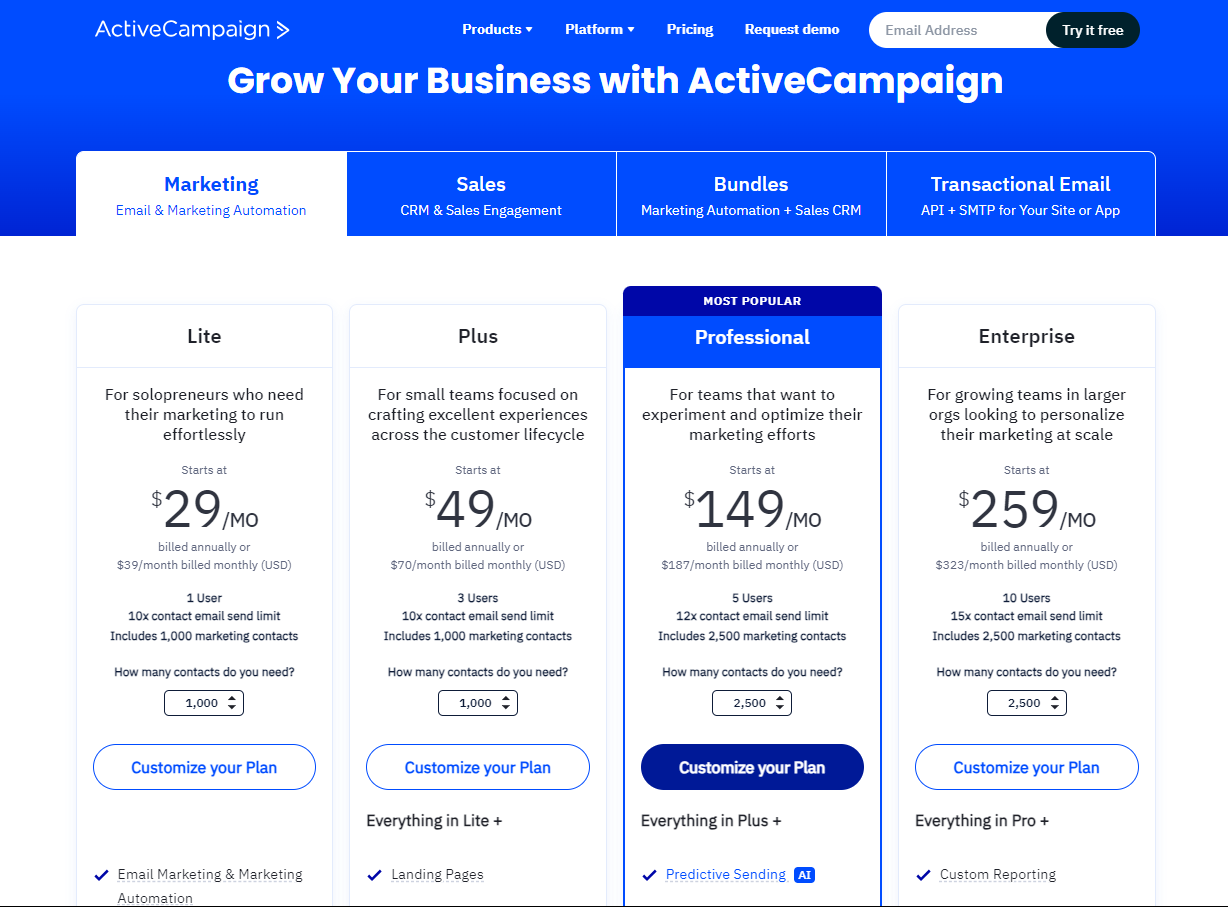

ActiveCampaign vs. HubSpot on pricing and getting value for your money, we take note of the prices that these services charge per monthly subscription and the kind of return on investment (ROI) that these platforms can provide to your business. HubSpot offers businesses multiple, individual tools with high value that may potentially be useful in saving their money in the long run through its integrated platform. Meanwhile, ActiveCampaign focuses on marketing automation and email marketing, providing an affordable solution while allowing upgrades as the business grows.
Deliverability Rates
ActiveCampaign has a great emphasis on high deliverability. They leverage the best technology with the best practices to ensure optimization in email delivery. The automatic list management, which includes cleaning out inactive subscribers, is in addition to the use of authentication tools like SPF and DKjIM, along with scanning content thoroughly to avoid spam triggers. In addition, ActiveCampaign helps users with comprehensive reports and insights into the performance of their emails to improve their strategies at all times and keep a high deliverability rate.
On the opposite side, HubSpot has an all-inclusive view of email marketing that will yield very high deliverability rates. With this system in place, HubSpot ensures that email campaigns, through their CRM, are largely targeted and applicable to the receivers which is one of the biggest reasons for not passing spam filters. HubSpot also monitors deliverability with highly capable tools and dedicates its IP addresses to those who subscribe to the higher-tiered plans giving them the much-needed control over their sending reputation.


Comparing ActiveCampaign vs HubSpot in deliverability, both have a strong commitment to ensuring the emails sent by their users meet the right customers. The decision between the two may be determined by the features and tools they each provide to maintain and enhance deliverability, and how each of the tools will fit into the company’s email marketing strategies.
Reporting and Analytics
ActiveCampaign offers analytics capabilities with its main focus is on email campaign performance, contact trends, and the results of automation. Users can get detailed reports on opening rates, clicking through, and conversions, so it becomes possible for them to determine how effective their email marketing is. ActiveCampaign also has testing with the split testing feature, where marketers can test elements of their campaigns for optimization. Its CRM also encompasses sales reporting, hence giving insights into the performance of the pipeline and sales activities.
On the other hand, with its all-in-one marketing platform, HubSpot gives a more comprehensive set of analytic and reporting options for email marketing, website performance, social media engagement, and the overall effectiveness of the marketing funnel. All marketing efforts are visible at a glance since the platform is integrated which influences the contribution of different channels towards lead generation and conversion. HubSpot’s custom reporting tools allow users to dig deeper into certain metrics because it allows them to create and have reports built according to their business goals.
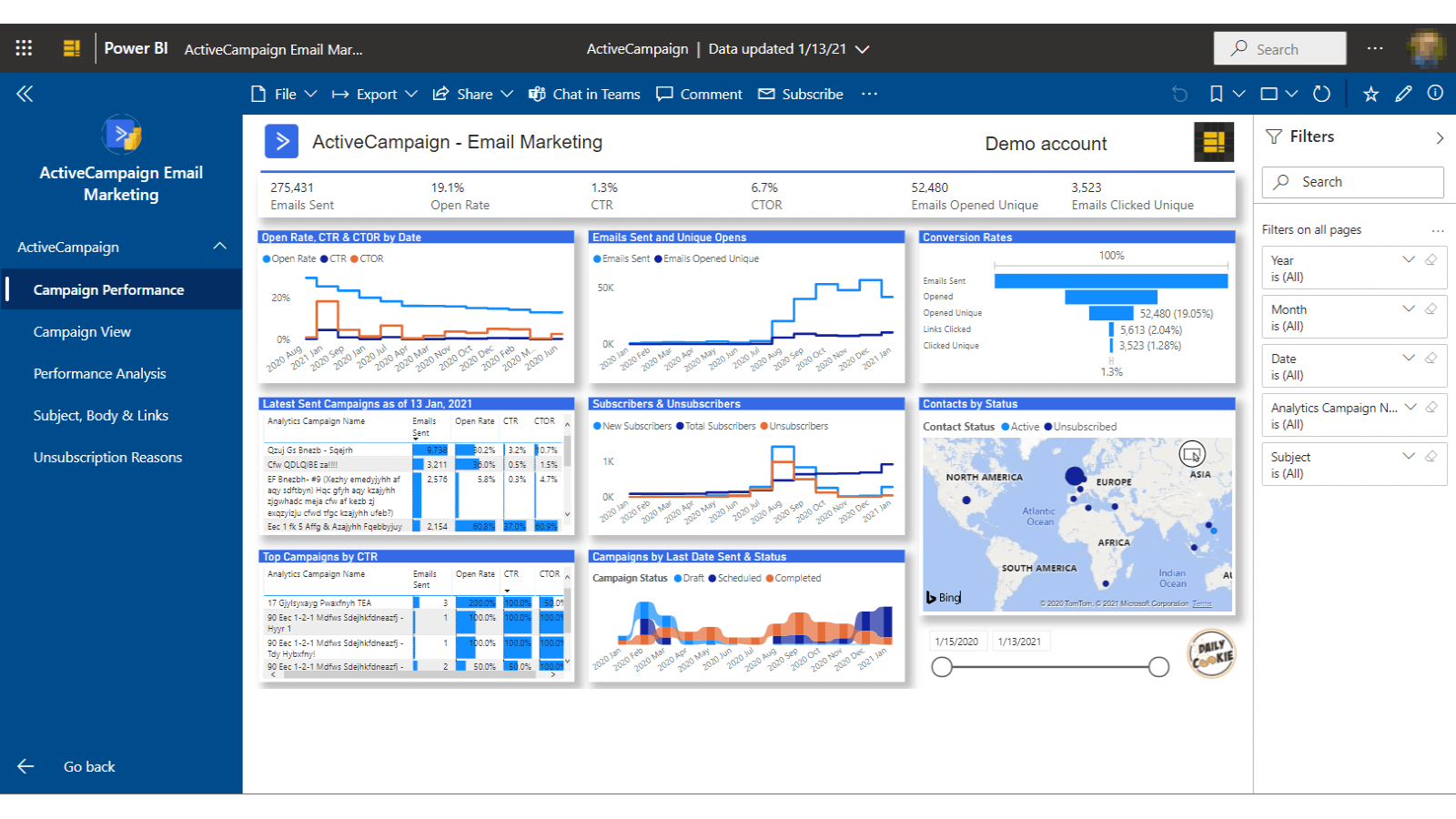

When ActiveCampaign is compared with HubSpot in reporting and analytic capabilities, quite often the choice has to be made between the depth and breadth of insights required. ActiveCampaign is strong in very detailed email and automation analytics, hence perfect for businesses that want to focus on this. On the other hand, HubSpot offers an all-inclusive cross-channel analysis that might provide a fuller scope regarding marketing performance.
Customization and Flexibility
ActiveCampaign is very customizable, especially in the automation workflow, email campaign, and user segmentation. It offers a visual automation builder for creating custom, advanced automation on a large set of triggers and actions. This detailed level of data will allow businesses to further fine-tune their marketing efforts down to even the smallest of customer behaviors and preferences. Custom user fields and tags customize the data to be used for any targeted marketing strategy.
On the other hand, HubSpot integrates better and is more of an all-in-one platform for making the management of marketing, sales, and service processes easy. Its customizability strengths are in the ability to customize the content of the website, emails, and landing pages based on data information of the user stored within its CRM. HubSpot workflows are somewhat customizable, but they present a slightly friendlier face, helping take some of the depth of options in ActiveCampaign with a fine tradeoff. The applications produced by HubSpot’s ecosystem for its native platform are many, expanding its native capability to suit many business needs.
Comparing ActiveCampaign vs HubSpot in customization and flexibility, a business’s technical ability and unique customization demands will largely determine which option is best for them. ActiveCampaign with an extremely detailed control, is the perfect service for a business that has a complex marketing strategy or one that demands great detail from segmentation and automation. HubSpot is unique in that it has a nice mix of extensive customization options and user-friendliness, allowing the solution to meet the requirements of businesses requiring a single system that is adaptable enough to be used in a variety of sales, service, and marketing situations.
User Reviews and Community
ActiveCampaign customers usually praise the advanced automation tools and great opportunities for detailed segmentation of contacts. Customers have also expressed satisfaction with the fact that customer support is very helpful and has many resources that help them get better at learning about ActiveCampaign. However, some customers don’t like the steep learning curve, especially the beginners in marketing automation.
HubSpot reviews usually highlight the fact that it is an all-in-one platform because of its integrated suite of tools that cover marketing, sales, and customer service. Their platform is also praised for its easy-to-use, with extensive training resources through HubSpot Academy and an open community that encourages sharing knowledge and connection. Critics normally point at the pricing of the platform, with some users indicating that the cost behind advanced features and higher-tier plans becomes restrictive.
Both have very active community forums and social media accounts which are used to ask questions, share experiences, and give advice. In real terms, these communities are big resources for new and existing users to allow them to work together for problem-solving and innovations.
Conclusion and Final Thoughts
ActiveCampaign is highly regarded for its advanced automation capabilities and detailed segmentation as mentioned before, making it an excellent choice for businesses focused on creating personalized customer journeys and optimizing email marketing strategies. Its flexibility and scalability cater well to businesses of all sizes, especially those that prioritize email marketing and automation.
HubSpot is known for its all-in-one platform, giving a seamless integration of marketing, sales, and customer service tools. Its user-friendly interface and comprehensive inbound marketing features make it ideal for businesses looking for an integrated approach to managing their entire customer lifecycle. HubSpot’s extensive training resources and supportive community also enhance its value for businesses who want to grow their inbound marketing expertise.
When considering ActiveCampaign vs HubSpot, consider the initial cost and also the potential ROI each platform can bring to your business. HubSpot may offer greater value for businesses who want an integrated solution that supports a wider range of functions beyond email marketing and automation. Meanwhile, ActiveCampaign’s focus on advanced automation features provides a powerful tool for businesses looking to dive deep into personalized marketing campaigns.
